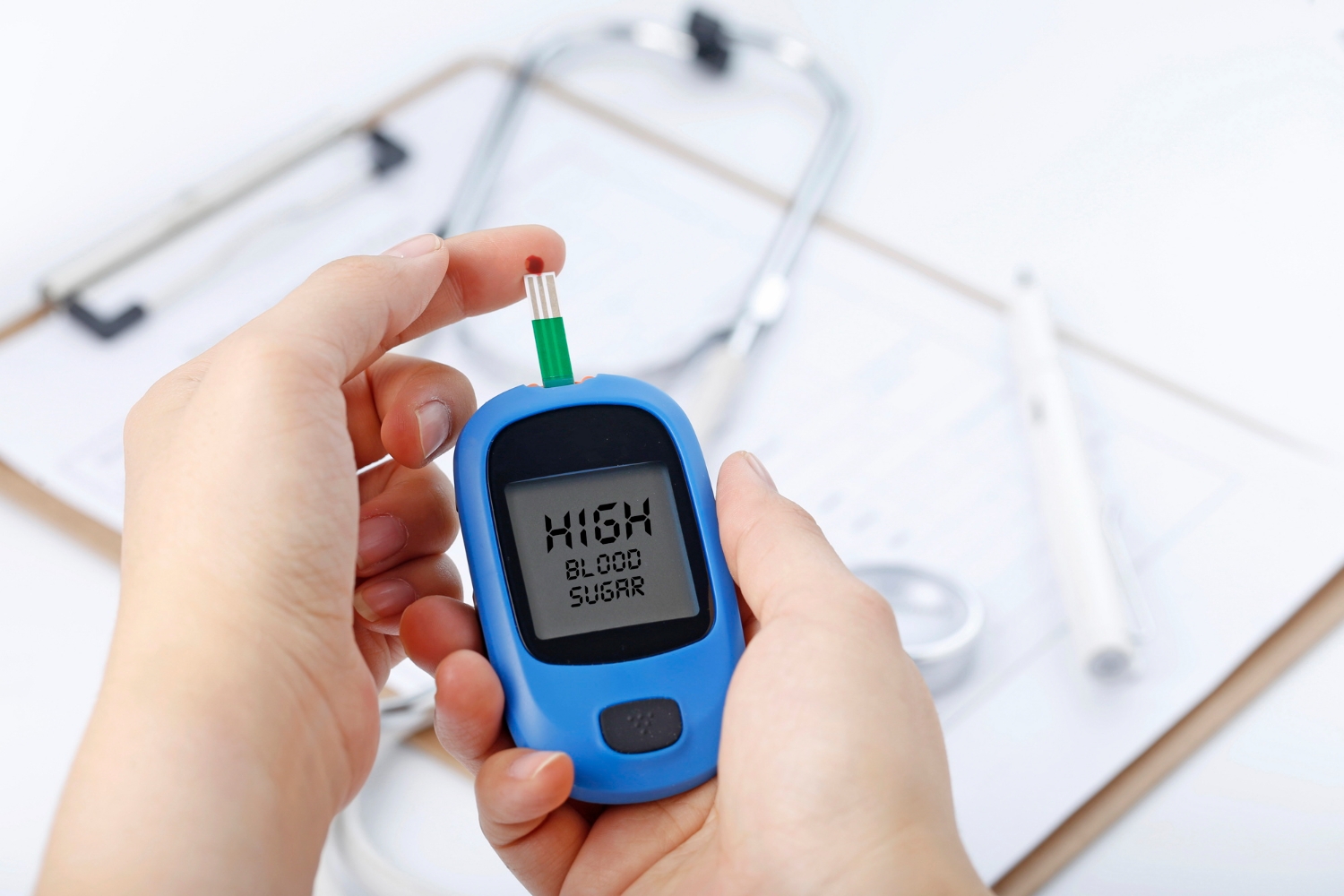Diabetes mellitus is a nutritional disorders, characterized by an abnormally elevated level of blood glucose and by the excretion of the excess glucose in the urine. It results from an absolute or relative
lack of insulin which leads to abnormalities in carbohydrate metabolism as well as in the metabolism of protein and fat. Diabetes is a disease known to the medical world since time immemorial. Its incidence is , however, much higher at present than ever in the past.
This is especially true in case of more advanced countries of the world due to widespread affluence and more generous food supply.
The most commonly-used screening tests are the determination of the fasting blood glucose level and the two-hour postprandial, that is after a meal. The normal fasting blood sugar content is 80 to 120 mg.
per 100 ml. of blood and this can go up to a level of 180 mg. per 100 ml. of blood two hours after meals. Anything above these norms can be termed diabetic levels. Diabetes occurs in all age groups, from
young infants to the elderly.
The greatest incidence occurs in middle or older aged persons. It is estimated that 80 to 85 per cent of all
individuals with diabetes mellitus are 45 years of age or older.
Symptoms
The word diabetes is derived from the Greek word meaning “to siphon to pass through”, and mellitus comes from the Latin word “honey”. Thus two characteristic symptoms, namely, copious urination and glucose in the urine give the name to the disease. The normal volume of urine passed daily is about one and a half litres.
The urine is of a pale colour, has an acidic reaction and sweetish odour. The quantity of sugar present in it varies from one-andquarter decigram to two and-a-half grams the total per day in many cases reaching as much as one kg in 15 litres of urine. A diabetic feels hungry and thirsty most of the time, does not put on weight, though he eats every now and then, and gets tired easily, both physically and mentally. He looks pale, may suffer from anaemia, constipation, intense itching around the genital organs, palpitations and general weakness. He feels drowsy and has a lower sex urge than a normal person.
Causes
Diabetes has been described by most biological doctors as a “prosperity” disease, primarily caused by systematic overeating and consequent obesity. Not only the overeating of sugar and refined arbohydrate but also of proteins and fats, which are transformed into sugar if taken in excess, is harmful and may result in diabetes.
Too much food taxes the pancreas and eventually paralyses its normal activity. It has been estimated that the incidence of diabetes is four times higher in persons of moderate obesity and 30 times higher in persons of severe obesity. Grief, worry and anxiety also have a deep influence on the metabolism and may cause sugar to appear in the urine. The disease may be associated with some other grave organic disorders like cancer, tuberculosis and cerebral disease. Heredity is also a major factor in the development of the disease. It has been rightly said, ” Heredity is like a cannon and obesity pulls the trigger.”
Treatment
Any successful method of diabetes treatment should aim at removal of the actual cause of the disease and building up of the whole health-level of the patient. Diet plays a vital role in such a treatment.
The primary dietary consideration for a diabetic patient is that he should be a strict lacto-vegetarian and take a low-calorie, low-fat, alkaline diet of high quality natural foods. Fruits, nuts and vegetables, whole meal bread and dairy products form a good diet for the diabetic. These foods are best eaten in as dry a condition as possible to ensure thorough salivation during the first part of the process of digestion. Cooked starchy foods should be avoided as in the process of cooking the cellulose envelops of the starch granules burst and consequently, the starch is far too easily absorbed in the system. The excess absorbed has to be got rid of by the kidneys and appears as sugar in the urine. With raw starchy foods, however, the saliva and digestive juices in the small intestine regulate the quantities required to be changed into sugar for the body’s needs.
The unused and undigested portion of raw starchy foods does not become injurious to the system, as it does not readily ferment. The diabetic should not be afraid to eat fresh fruits and vegetables which ontain sugar and starch. Fresh fruits contain sugar fructose, which does not need insulin for its metabolism and is well tolerated by diabetics. Fats and oils should be taken sparingly, for they are apt to lower the tolerance for proteins and starches. Emphasis should be on raw foods as they stimulate and increase insulin production. For protein, home- made cottage cheese, various forms of soured milks and nuts are best. The patient should avoid overeating and take four or five small meals a day rather than three large ones. The following diet should serve as a guideline.
Upon arising : A glass of lukewarm water with freshly squeezed lemon juice.
Breakfast : Any fresh fruit with the exception of bananas, soaked prunes, a small quantity of whole meal bread with butter and fresh milk.
Lunch : Steamed or lightly cooked green vegetables such as cauliflower, cabbage, tomatoes, spinach, turnip, asparagus and mushrooms, two or three whole wheat chapatis according to appetite and a glass of butter-milk or curd.
Mid-afternoon : A glass of fresh fruit or vegetable juice. Dinner : A large bowl of salad made up of all the raw vegetables in season. The salad may be followed by a hot course, if desired, and fresh home-made cottage cheese.
Bedtime Snack : A glass of fresh milk
Cinnamon
A medically beneficial indulgence to help lower your blood sugar and
cholesterol levels.
Fenugreek
A seed commonly used as a food spice has been used abroad for centuries
for its medical benefits to lower cholesterol and hba1c. If your urine smells
like maple syrup, not to worry, this is a known side effect and is harmless.

